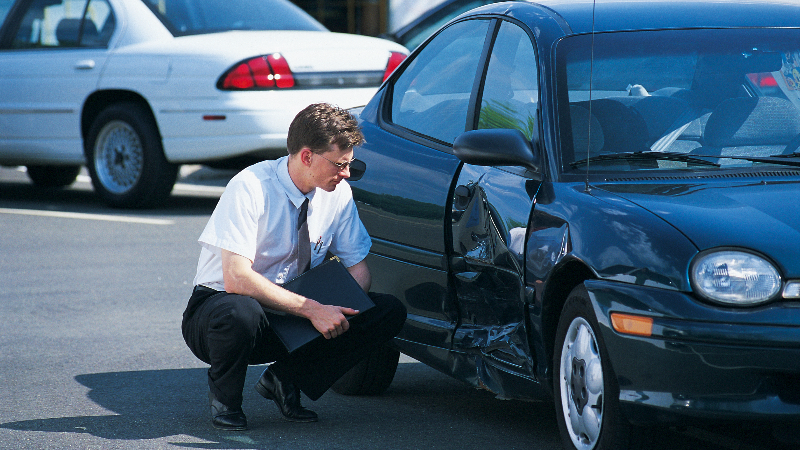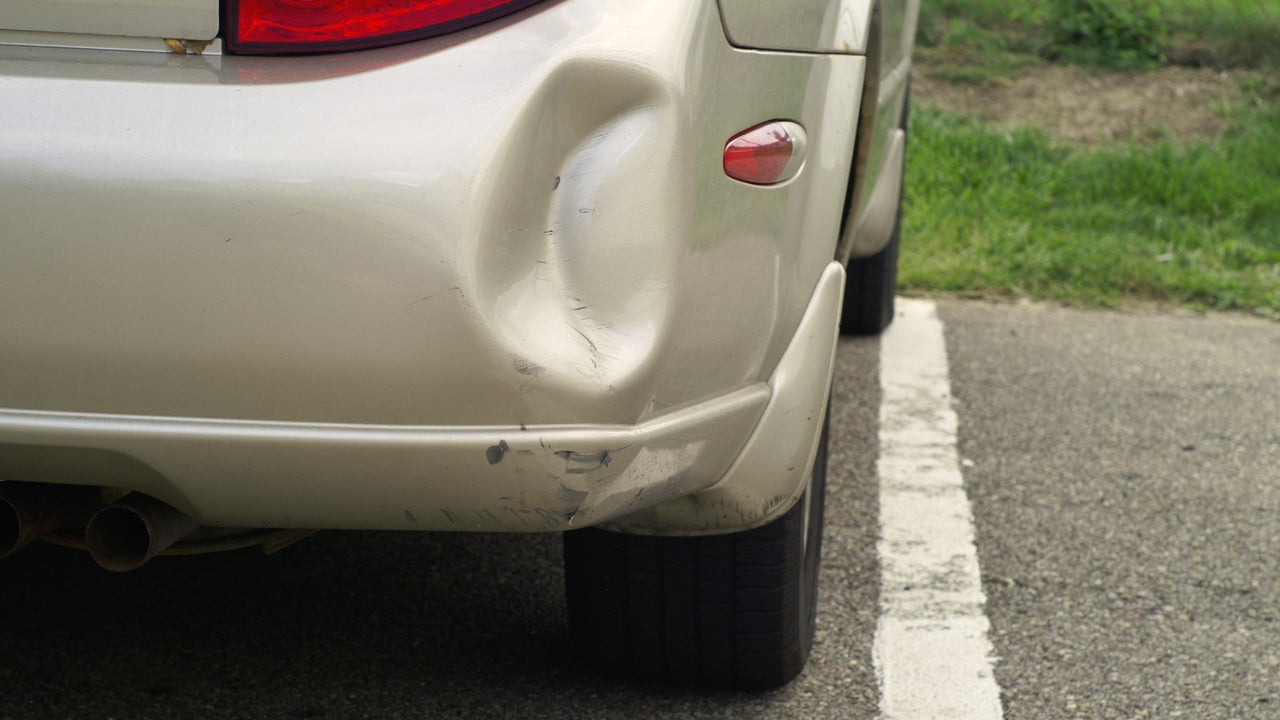How to file a diminished value claim




Key takeaways
- Diminished value is the difference between your car’s value before an accident and after, even if it’s repaired.
- Filing for a diminished claim may help you earn back some of your car’s lost market value after an accident.
- You’re unlikely to be successful in a diminished value claim if you were at fault in the accident.
- Almost all insurers allow you to file a diminished value claim.
You’re probably familiar with the process of filing an auto insurance claim for damage to your vehicle. If the car was damaged because of a covered peril, you’ll often receive a payout to repair or replace the car. However, cars that have been damaged and repaired lose their value, so you may have a harder time getting your money’s worth when you try to sell or trade in the vehicle. Fortunately, you can file a claim for the difference between what your car was worth before the accident and its current diminished value. We’ll walk you through the process so you can decide if it’s worth it to file a diminished value claim in your situation.
What is diminished value?
After an accident, your car’s market value decreases even if it’s restored back to its pre-accident condition following repairs. Diminished value is the difference in your car’s market value before and after an accident. Even if you try to resell your vehicle, CARFAX and other similar reports will show that it has been involved in an accident, which will likely reduce its market value. A diminished value claim — or diminution in value claim — may help recover the loss in value you may take when you go to sell your car or trade it in for a different vehicle if it has been involved in an accident or other covered damage incident.
Types of diminished value
There are three types of diminished value. Each type relates to the depreciation in the cost of your vehicle after an accident.
Calculating diminished value
Most insurance companies use a calculation called the 17c Diminished Value Formula to determine the value of a vehicle post-accident. This formula originated in a Georgia claims case involving a State Farm diminished value claim, where it appeared in paragraph 17, section c (which is where it got its name). Below are the steps used to calculate diminished value under this formula.
Step 1: Determine the value of your car
You can determine the sales, or market, value of your vehicle using the NADA or Kelley Blue Book websites. Both offer a calculator where you can input a few pieces of information regarding your vehicle. You will need to include the year, make, model, mileage and the extent of damage done to your car.
Step 2: Apply a 10% cap to that value
Insurance companies commonly apply a 10 percent cap — known as the base loss of value — to the sales value of your vehicle estimated by NADA or the Kelley Blue Book diminished value calculator. This cap is the maximum amount your insurance company will pay on the claim.
Step 3: Apply a damage multiplier
Insurance companies use a damage multiplier to adjust the value of the vehicle described in step two. The 10 percent cap value is multiplied by a number ranging from 0.00 to 1.00 according to the structural damage done to your car after an accident. The 0.00 multiplier represents no structural damage or replaced panels, while the 1.00 multiplier represents vehicles with severe structural damage.
| Multiplier | Damage level |
|---|---|
| 1.00 | Severe structural damage |
| 0.75 | Major damage to structure and panels |
| 0.50 | Moderate damage to structure and panels |
| 0.25 | Minor damage to structure and panels |
| 0.00 | No structural damage |
Step 4: Apply a mileage multiplier
While NADA and Kelley Blue Book take the mileage of your car into consideration when determining the value, insurance companies calculate their own mileage deduction. The adjusted value in step three is multiplied by one of these mileage multipliers to calculate the final diminished value of your vehicle.
| Multiplier | Damage level |
|---|---|
| 1.00 | 0-19,999 miles |
| 0.80 | 20,000-39,999 miles |
| 0.60 | 40,000-59,999 miles |
| 0.40 | 60,000-79,999 miles |
| 0.20 | 80,000-99,999 miles |
| 0.00 | 100,000+ miles |
To summarize, to calculate the diminished value of your car under formula 17c, you would take your vehicle value and multiply it by a 10 percent cap. You would then apply a damage multiplier based on the damage to your car and a mileage multiplier based on your mileage.For example, if the market value of your vehicle is $15,000 with moderate damage to structure and panels and 20,000 miles, your formula to calculate diminished value would be:
$15,000 x .10 = $1,500 — This would be the maximum you would receive for a diminished value from an auto insurer.
$1,500 x .50 = $750 — This would be the value adjusted for moderate damage.
$750 x .80 = $600 — This would be the value adjusted for vehicles with 20,000 miles.
Based on this example, an auto insurer would pay out a maximum of $1,500 for a diminished value claim on this vehicle. However, based on the damage and mileage, the final calculated estimate for a diminished value payout would be $600 for this vehicle. This means that the insurance company may pay the owner $600 to compensate for the diminished value of their vehicle caused by the accident damage.
How to file a diminished value claim
Filing a diminished value claim may be more involved than filing a claim for other issues because the burden of proving the car’s diminished value is generally your responsibility.If you are deemed at fault in the accident, your diminished value claim will likely be denied. If the other driver is at fault, then you would likely contact their auto insurer to discuss how to file a diminished value claim with them.Here are the steps you may need to take to file a diminished value claim:
- Check the insurance company’s process for filing a diminished value claim.
- Document the car’s market value using Kelley Blue Book or NADA calculator tools.
- Prove your car’s diminished value. Having photos and documents of the accident scene and damage to your vehicle may help your case. You may need to get an appraisal from a certified vehicle appraiser as part of the claims process.
- Satisfy all the insurance company’s conditions for diminished value and file your claim. This may give you the best chance of having your diminished value claim approved.
It is important to note that state regulations may also affect how diminished value claims are handled. Since every state has different statutes regarding insurance, researching state laws may better help you understand your rights regarding the diminished value of your vehicle.
Considerations when filing a diminished value claim
It does take more time and effort to file a diminished value claim, and there is no guarantee that you will receive compensation after you file. However, not everyone needs to file a diminished value claim. Before beginning the filing process, take the following into account:
- Your vehicle’s value before the accident: If you drive an older car that has a lot of mileage or structural damages, you may not receive a payout for diminished value.
- Whether you were at fault: If you caused the accident, then your insurance company most likely will not pay a diminished value claim.
- If you are involved in an accident with an uninsured driver: If you have uninsured motorist coverage with your insurer, you may have a slightly better chance of receiving compensation from a diminished value claim.
- What state you live in: Every state has different regulations around diminished value claims.
Since each state goes by different statutes for diminished value payouts, it is important to research the regulations in your state. All states except Michigan allow for some level of diminished value claim to be filed if the other party is at fault, according to the Insurance Information Institute.
When to file a diminished claim
If you are involved in an accident where the other party is at fault, it may make sense to file a diminished value claim so you can recover the difference in your vehicle’s value. In most cases, you cannot file a diminished claim against your own insurance company, which means attempting to file it if you are at fault in an accident will most likely be denied. You may be able to file a diminished value claim with your own insurance company if the at-fault driver is an uninsured motorist or you are the victim of a hit-and-run.
It is generally best to file for a diminished claim with the at-fault party’s insurance company as soon as possible, preferably in the days after the accident occurs. It is often easier to present your case (with supporting documentation) when you file quickly. Also, the value of your vehicle could decrease the longer you wait to file a claim. Each state has its own statute of limitations, which require you to file a claim within a certain time frame from the accident.
Frequently asked questions
Why we ask for feedback Your feedback helps us improve our content and services. It takes less than a minute to complete.
Your responses are anonymous and will only be used for improving our website.
You may also like

What is an insurance claim and when should you file one?

Filing a car insurance claim: a step-by-step guide

Do you need your own claims adjuster?

Should I file an insurance claim for bumper damage?
